Progress Report: 5-String Fiddle
When I last posted, it was to explain my neck and scroll procedure. Before that, I had left the project with both plates partially carved. The garland was complete, but with linings on the front side only.
Front Plate Procedure
So, moving forward, the next thing was to complete the front plate,
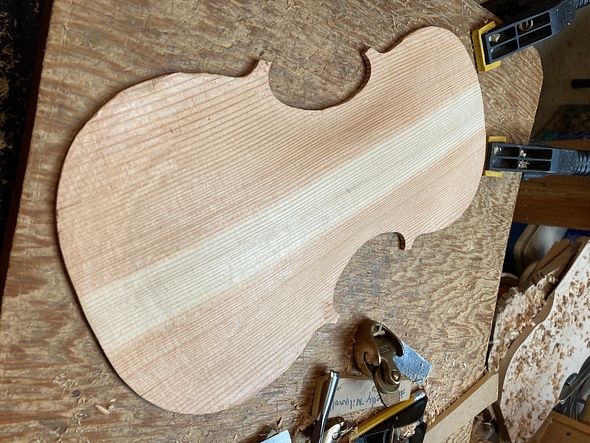
Once the arching was nearing correct values, I carved most of the interior and then began laying out f-holes and purfling lines. The Douglas Fir is extremely difficult to work with, because the winter reeds are incredibly hard, while the summer reeds are nearly as soft as spruce… so the knife tends to follow the winter reed, instead of your intended path, making it very difficult to cut a smooth line.

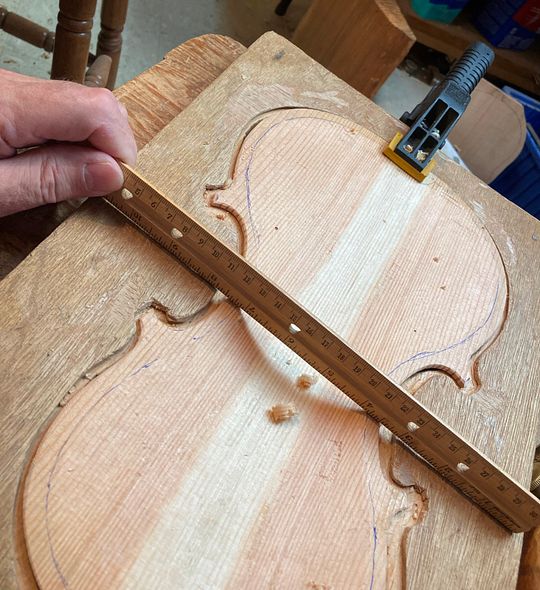
Purfling Procedure
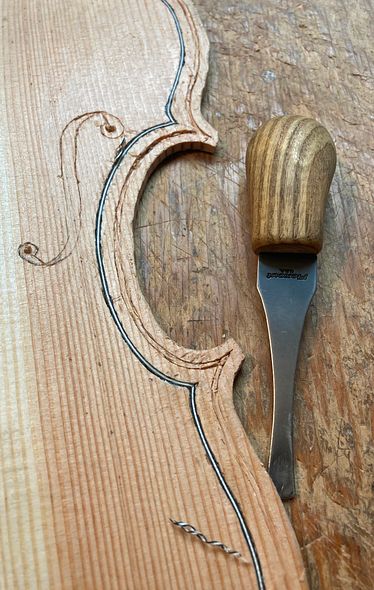
It was discouraging seeing how rough my beginning looked. But, as things progressed, I was able to clean up my lines a little and they began to look more acceptable:
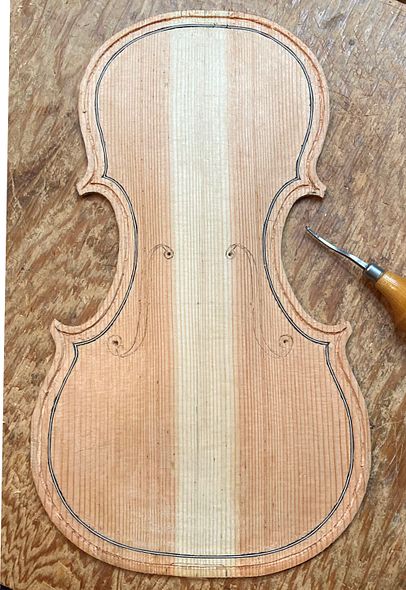
And then, The outer purfling. I was being careful to not inlay the purfling too deeply, for fear of causing problems, but that meant the purfling did not want to stay in the slots by itself, while the glue set. So I had to clamp it down until the hot hide glue gelled and set up.
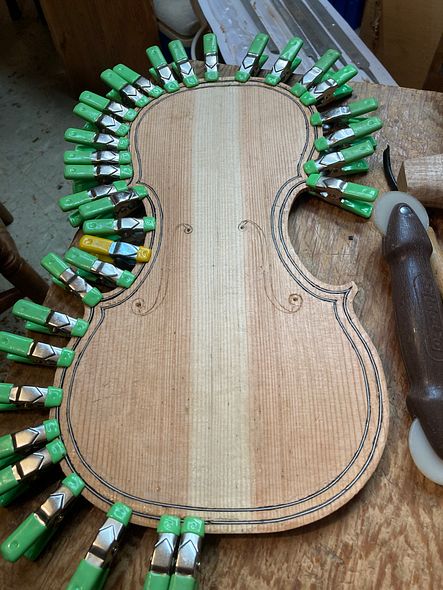
But it looked pretty good after I planed it all flush with the Douglas Fir.
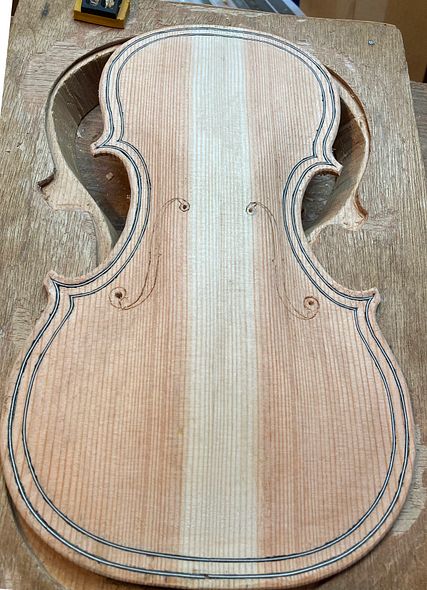
When the interior and exterior were correct, I could finish cutting out the f-holes.
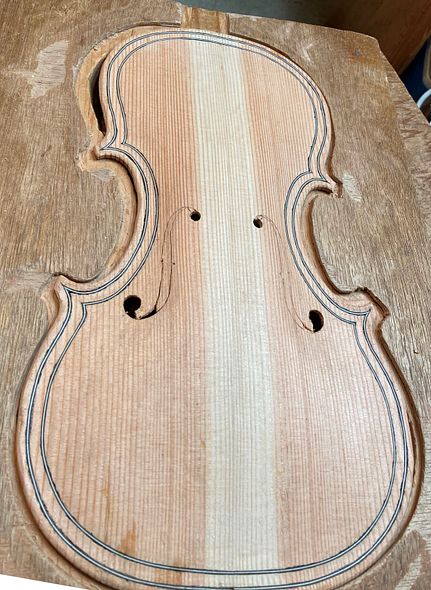
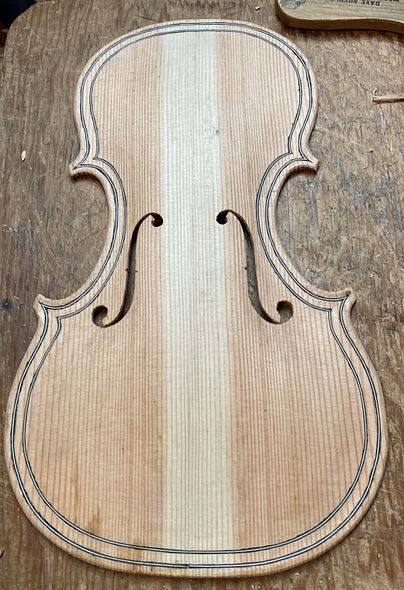
I forgot to take pictures of the sequence of steps installing the bassbar. I constructed it of Douglas Fir, to match the top plate, and chalk-fit it to the correct location inside the plate. After the glue was dry I shaped it to the correct height, thickness and curvature.
(There are a couple of links in the above paragraph to other builds, where I remembered to take pictures,,,sorry for the inconvenience!)
Then, after completing the inside scraping and edge preparation, I installed the front plate, using hot hide glue and spool clamps.
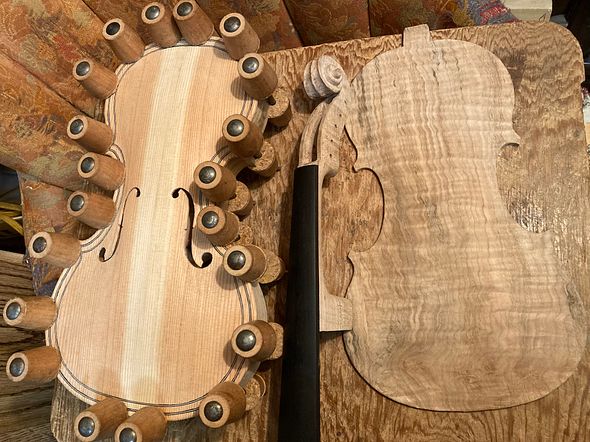
Next time, I will show the procedures for setting the neck, completing the back plate and closing the corpus.
Thanks for looking!
